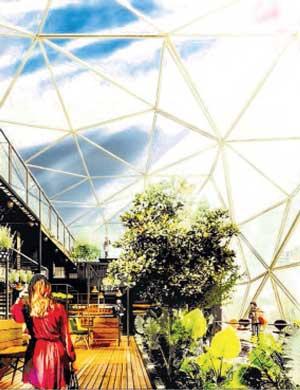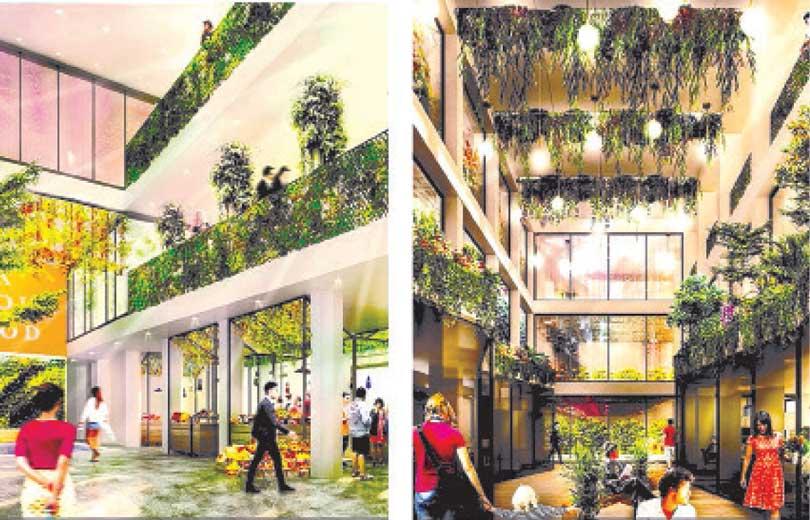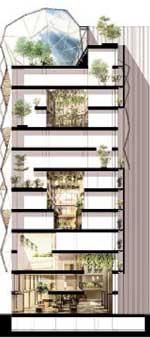03 Jun 2021 - {{hitsCtrl.values.hits}}
 In 2020 the interdisciplinary team of University of Florence won the competition launched by the University of Wageningen, focusing on the retrofitting action of one of the existing towers of the former Bijlmerbajes prison complex in Amsterdam. The challenge stimulated students and teachers to demonstrate the possibility of imagining the architectonic environment as a living organism, being part of the new food production chain and increasing buildings’ sustainable comfort while reducing their energy consumptions. Promoting a healthy lifestyle, an awareness of environmentally friendly behaviour and keeping the ecological footprint as low as possible were the main goals to achieve with the retrofitting and regenerative proposal of the Green-Tower.
In 2020 the interdisciplinary team of University of Florence won the competition launched by the University of Wageningen, focusing on the retrofitting action of one of the existing towers of the former Bijlmerbajes prison complex in Amsterdam. The challenge stimulated students and teachers to demonstrate the possibility of imagining the architectonic environment as a living organism, being part of the new food production chain and increasing buildings’ sustainable comfort while reducing their energy consumptions. Promoting a healthy lifestyle, an awareness of environmentally friendly behaviour and keeping the ecological footprint as low as possible were the main goals to achieve with the retrofitting and regenerative proposal of the Green-Tower.
The building design aims to communicate the significance of urban farming in this spatially consolidated world as a landmark on how food production can be achieved in cities. The envelope becomes a living bio-skin: the old structure replaces the existing facade with a new transparent one made in ETFE (Ethylene tetrafluoroethylene), a fluorine-based plastic, integrating a system of micro-algae production within the cushions. As ivy grows on old abandoned buildings without affecting their structure, our new facade symbolically gets “eaten up” by nature, like green plants growing on ruins. The bio-skin winds like a climbing plant and hugs both sides of the tower, as if to symbolize the branches of a tree. The façade system arises from a geometrization of ivy leaves, associated with the elementary shape of the triangle.
 The green facade should improve the air quality in the most efficient way possible. The most efficient plants are algae, which grow ten times faster than any other plant and produce about 70% of the atmospheric oxygen. Integrating them in a building’s facade can be a solution to the air pollution in metropolises and contribute to a cleaner environment, especially in areas with limited space for agricultural land.
The green facade should improve the air quality in the most efficient way possible. The most efficient plants are algae, which grow ten times faster than any other plant and produce about 70% of the atmospheric oxygen. Integrating them in a building’s facade can be a solution to the air pollution in metropolises and contribute to a cleaner environment, especially in areas with limited space for agricultural land.
As a pilot project, a system of tubes in the transparent façade is included, which leads a nutrient fluid through the envelope allowing algae to grow within the structure. The system can be combined with a waste water treatment system and aquaponic system, recycling nutrients, supporting the development of a sustainable water management.
The project will develop a solid concept that could put together the advantages of a kinetic facade with the vast opportunities that the algae cultivation could offer. The idea is to set basic criteria for the design of a productive building for the circular city of the future.


Sent by
Antonella Trombadore
24 Nov 2024 22 minute ago
24 Nov 2024 28 minute ago
24 Nov 2024 2 hours ago
24 Nov 2024 6 hours ago
24 Nov 2024 7 hours ago